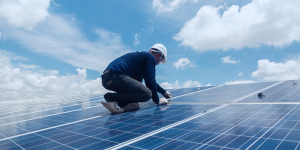Thermal Account 3.0: more generous incentives, more eligible entities, and a new impetus for renewables
Conto Termico 3.0 expands incentives for efficiency and green building: up to 65% coverage for private homes, 100% for small public buildings; increased beneficiaries; new technologies included.

The Conto Termico 3.0 (Thermal Account 3.0), a ministerial decree of August 4, 2025 , significantly revises incentives for energy efficiency and renewable energy sources in buildings. With a total annual budget of up to €900 million, the new scheme simplifies procedures, expands the range of beneficiaries (including third-sector entities and energy communities), and covers up to 65% of costs for many projects—and up to 100% in specific cases for public buildings. Photovoltaic systems with storage, heat pumps, biomass, and building envelope improvements: here's what's changing and when it's best to participate.
What are the main new features?
The most significant changes introduced by Conto Termico 3.0 include increased cost coverage : for private individuals, the average coverage is 65%, while public buildings in small municipalities (fewer than 15,000 inhabitants), schools, and healthcare facilities can benefit from 100%. The decree expands the beneficiaries to include third sector entities, renewable energy communities, and only private non-residential buildings, in addition to public ones. New incentivized technologies are added: photovoltaic with storage, electric charging stations—but only if combined with the replacement of the heating system with heat pumps—and BACS (Building Automation Control Systems). Typical interventions concern the energy efficiency of the building envelope (insulation, windows, shading), renewable thermal production, heat pumps, and biomass.
Who can access it and under what conditions
Eligible individuals are now private individuals, businesses, public administrations, third-sector entities, and energy communities. To access the highest levels of funding (up to 100%), the intervention must be carried out on public buildings in small municipalities, schools, or healthcare facilities. Only in these cases is the cost fully covered; otherwise, the percentages remain lower but still advantageous (around 65% for many private individuals). The interventions must also meet minimum technical requirements: system efficiency, compatibility with fossil fuel use limits, and adequate project design—especially insulation and thermoregulation.
Expected benefits and critical issues to be addressed
Expected benefits include a significant reduction in energy consumption in buildings, a reduction in climate-altering emissions, a greater diffusion of heat pumps and renewable thermal sources, and a push for integrated photovoltaic systems with storage. The expansion of beneficiaries and increased financial coverage are expected to make previously inconvenient interventions more accessible. However, some critical issues remain: high initial costs, the need for accurate technical planning, the price and availability of biomass fuel, the slowness that can still characterize some local authorization procedures, and the dependence on the annual Thermal Account budget, which could limit applications if the allocation is not maintained.
Related Focus





